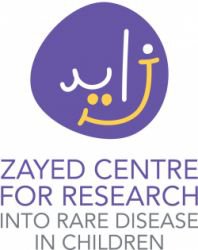Types of rare diseases
Below are some of the types of rare diseases that scientists and clinicians are likely to be working on in the new Zayed Centre for Research into Rare Disease in Children at Great Ormond Street Hospital.
Neuroblastoma
Neuroblastoma occurs in around 100 children each year in the UK or about one in 70,000 children. It usually affects children under the age of five, and can occur before a child is born. Neuroblastoma is a rare and aggressive childhood cancer and the cause is unknown. It is the most common solid tumour in children after brain tumours.
Hypoplastic left heart syndrome (HLHS)
HLHS affects about one in 5000 children. HLHS is a rare congenital heart defect in which the left lower pumping chamber (left ventricle) of the heart does not develop properly and so is much smaller than usual. This means that the heart is unable to pump blood around the body effectively. Babies born with HLHS are seriously ill immediately after birth and their symptoms include drowsiness, difficulty breathing and eating.
Primary ciliary dyskinesia (PCD)
PCD affects about one in 20,000 children and unless it is diagnosed early can lead to severe lung disease. PCD is an inherited condition where the cilia (microscopic hairs that beat in the airways) do not develop normally and this may affect the lungs, nose, sinuses and ears. Because of this, respiratory infections are very common in these children and these may be life-threatening.
Severe combined immunodeficiency disease (SCID)
SCID affects about one in 100,000 children. Because of a defect in one of a number of genes crucial to the body’s production of immune cells, children with SCID are unable to mount an attack against disease, meaning any infection they are exposed to can prove fatal. These children therefore have to be completely isolated from their surroundings in a sterile environment, giving rise to the common name for the condition – ‘boy in a bubble’ syndrome.
Long segment tracheal stenosis
The exact numbers of children with tracheal stenosis is not known. At Great Ormond Street Hospital, doctors tend to see between eight and 10 children each year. The trachea (windpipe) is the airway tube leading from the throat to the lungs. It is made up of a series of C-shaped rings of cartilage (similar to what the ears and nose are made of) linked together, a bit like vacuum-cleaner tubing. When a child has tracheal stenosis the rings are often fixed and O-shaped, so do not allow for growth and this can cause life-threatening respiratory distress.
Duchenne muscular dystrophy (DMD)
DMD is a rare condition that is more common in boys, affecting about one in every 3,500 male births. DMD starts in childhood and may be noticed when a child has difficulty standing up, climbing or running. It starts in the leg muscles before quickly progressing to other muscle groups. DMD is one of the most common and severe forms of muscular dystrophy.

